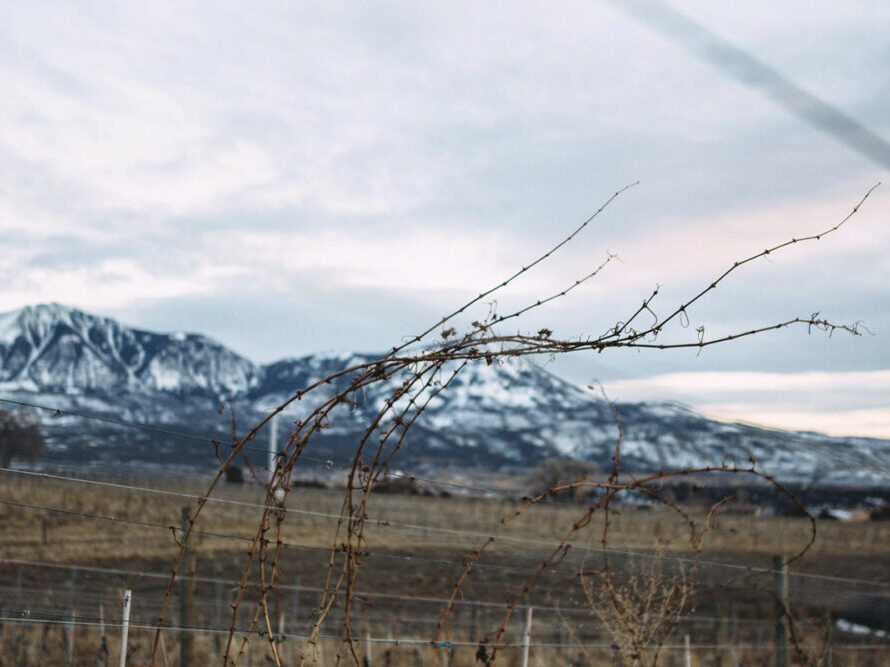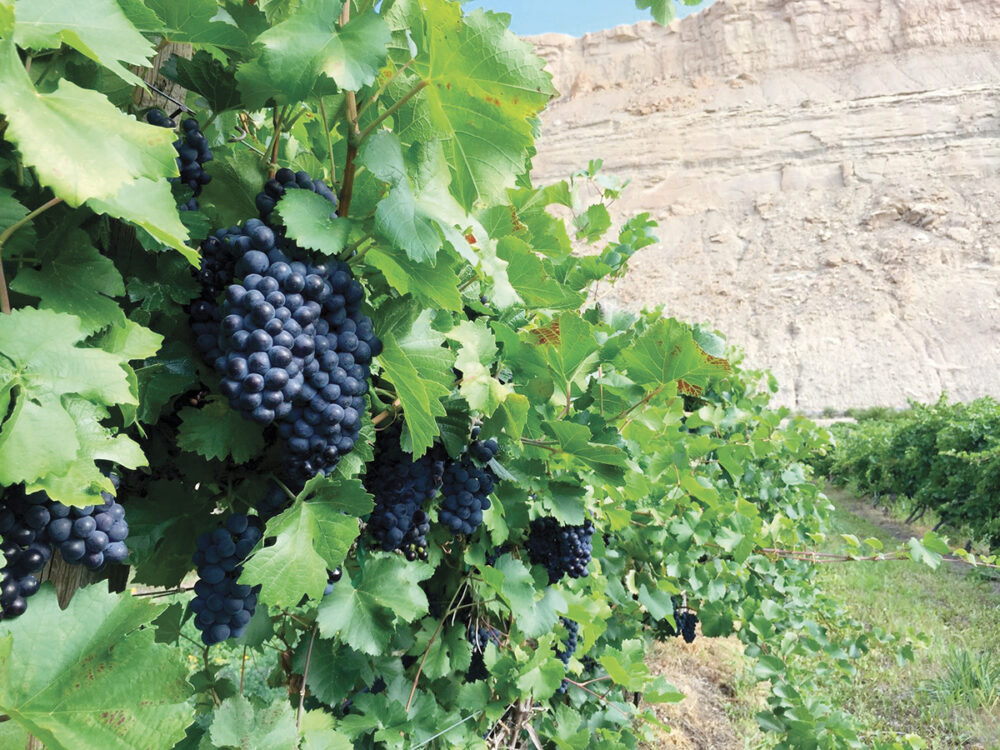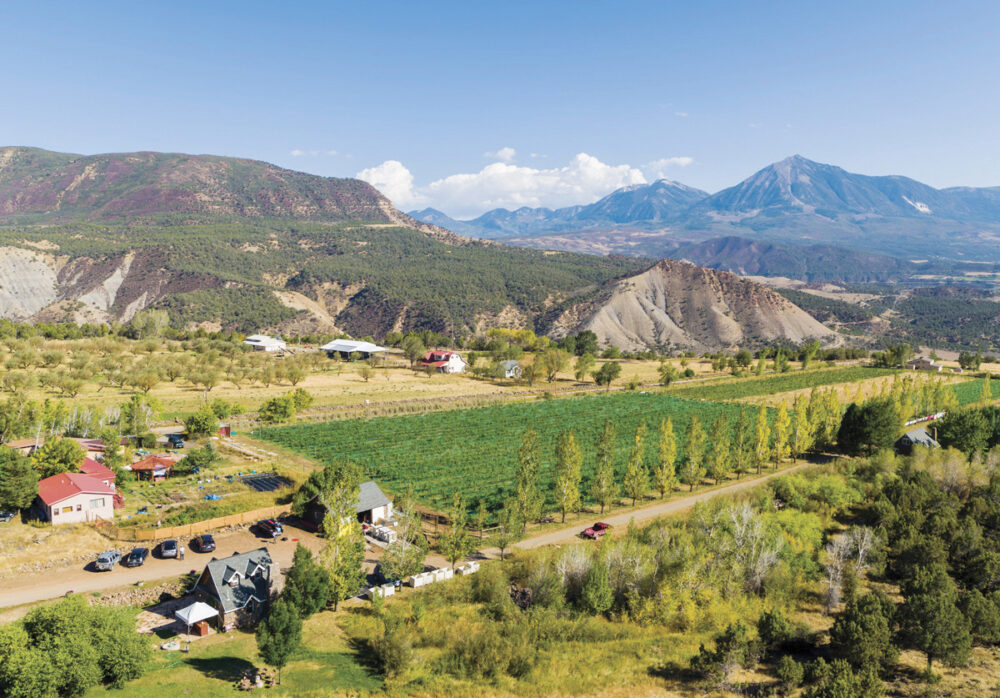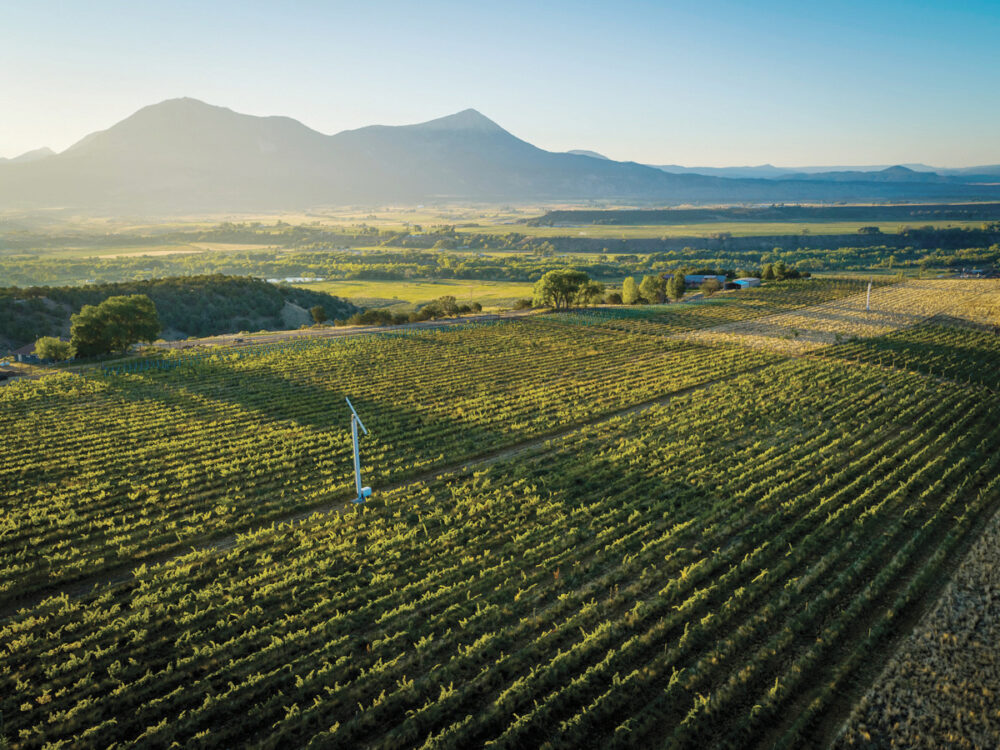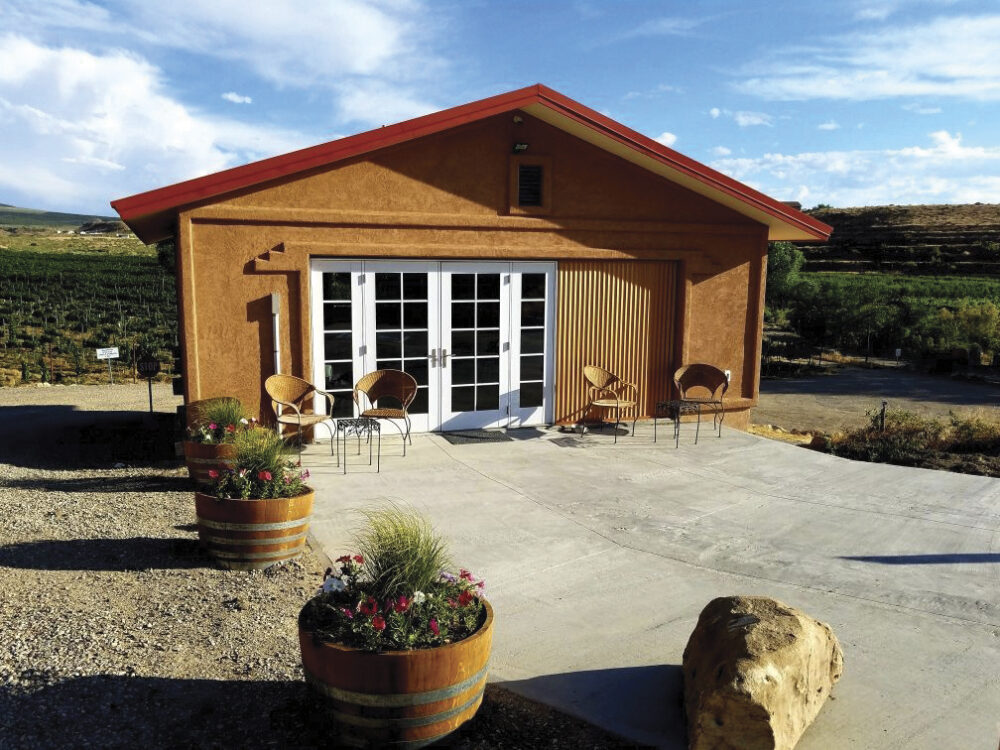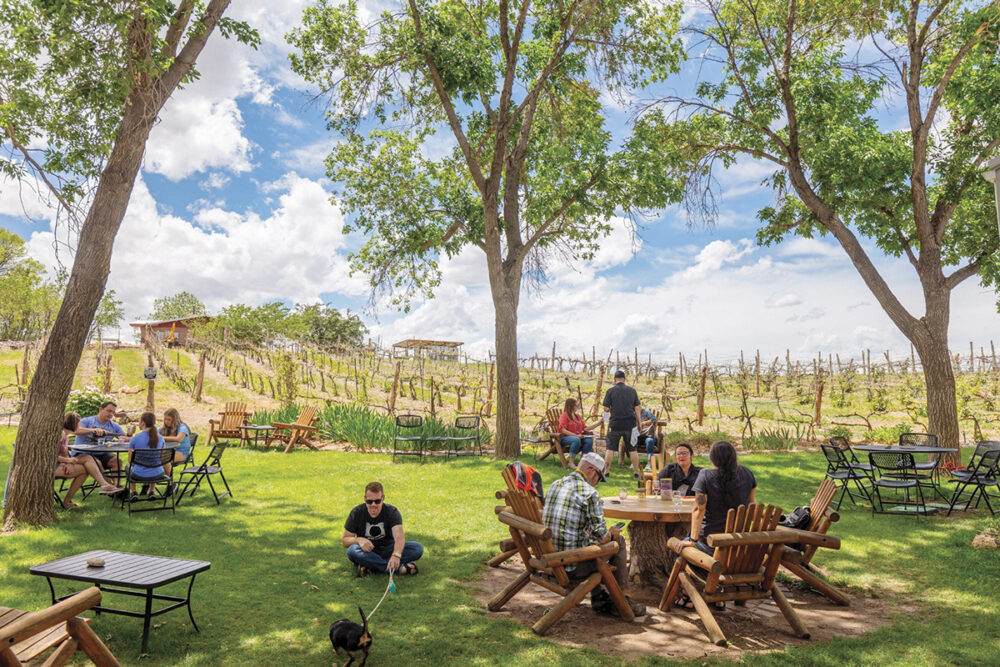Snow-capped peaks and rugged mountainous terrain aren’t exactly the first characteristics of terroir that come to mind when one thinks about an ideal wine-growing region—especially when looking at domestic wines. But in Colorado, grape growers have found their footing in the valleys of the Rocky Mountains, producing an eclectic and pleasant mix of varietals that prove the state has joined the American wine conversation with something to say.
Despite the reputation for being an elite ski destination—and for good reason since the state sees roughly 67 inches of snow annually—Colorado also makes the top-ten list of sunniest states with 300 days of sunshine. A closer look at the sun-filled valleys, warm growing degree days, cold nights, and serious elevation, makes Colorado wine production promising—especially as producers get to know their vineyard sites, grape varieties, and winemaking styles.
AVAS AND HIGH-ELEVATION VINEYARDS
Colorado’s elevation is, without a doubt, the single-most distinguishing factor of the state’s terroir. Vineyards are planted across the state at 4,500 to 7,000 feet above sea level, making them the highest vineyards in North America and slightly lower than some Argentinian vineyards. Humidity is very low, and the soil composition ranges from alkaline to sandy loam to boulders. A benefit of the climate, owner of Bookcliff Vineyards Ulla Merz said, is that “the cold winters and arid climate keep out pests and fungi common in other grape growing areas. As a result, we hardly need to apply pesticides, and fungicide is very limited.”
The state has two official AVAs, Grand Valley and West Elks, but impressively grows grapes from the northeastern edge down to the southwestern part of the state. “Colorado wine is all about community and creativity, with new varietals and winemaking styles flourishing throughout the state,” said Melanie Wick, a UC Davis Viticulture and Enology grad and co-owner of Whitewater Hill Vineyards. This exploratory inclination and expansive reach have led to the state-led denotation of five additional distinct regions. However, these are not officially approved by the Alcohol and Tobacco Tax and Trade Bureau (TTB)—the entity that approves the official status of winegrowing AVAs in America.
GRAND VALLEY AND WEST ELKS
The two official AVAs are located on the western edge of Colorado in a region most known for producing peaches, cherries, apples, pears, and apricots. In addition to the uptick in family-owned wineries, “the abundance of locally-grown produce within these regions has prompted a culinary surge,” said Jayme Henderson, co-founder and winemaker at The Storm Cellar. “Guests can expect world-class cuisine alongside a diverse array of wine styles from these emerging regions.”
The Grand Valley AVA surrounds the larger city of Grand Junction, along the rushing Colorado river, with a total of 75,990 acres. Enormous canyons open up into verdant green valley floors that boast an impressive 4,000 to 4,500-foot elevation. This area was the first in the state to grow wine grapes in the 1880s; it continues to be the most well-known and one of the most quality-producing regions in the state. It surprisingly sees as many growing degree days as Napa, Tuscany, and Bordeaux—though in a more compressed timeframe. In Grand Valley, grape growers work with a range of grapes, most notably Bordeaux varieties, Syrah, Tempranillo, and a surprising Lemberger from producer Carlson Vineyards.
The West Elks AVA is 48,405 acres and surrounds the small, mountainous town of Paonia. The elevation is even higher here, starting at 5,400 feet and extending to 7,000 feet above sea level. The growing season is a bit milder and begins about two weeks later than Grand Valley, with 30% fewer days between spring and fall frosts—making the growing season short and ideal for cooler climate, bright-acid wines like Riesling, Pinot Gris, and Pinot Noir.
“Colorado shines with its large variety of wines and styles presented in a non-intimidating setting,” said Merz, and these are some of the primary reasons why the state has seen an uptick in wine tourism. And, of course, wine tourism in Colorado wouldn’t be what it is without the adventurism of the state. “Adventure is what Colorado wine country has to offer,” said Joe Buckel of Buckel Family Wines. “Exploring some obscure varieties, drinking wine crafted from high-altitude vineyards, dining at fantastic restaurants featuring our local farmers, and having the mountains, rivers, and canyons at the doorstep” is what Colorado wine country is all about.
WHERE TO ADVENTURE
Bookcliff Vineyards
Bookcliff Vineyards has a beautiful tasting room in Palisade and offers breathtaking views of estate vineyards surrounded by rocky mesas that are quintessential Colorado. The estate will soon provide a new vineyard tour and tasting experience in addition to its traditional wine tasting. The bold-flavored Reserve Syrah is a favorite here.
Buckel Family Wine
Family-owned and operated Buckel Family Wine embraces the unique and challenging terroir of Colorado in their Old World style collection of minimal-intervention wines. Their Pét Nat Rosé of Syrah is a testament to what this family can do with high-altitude grapes. It’s well made in a refreshing style with a juicy strawberry flavor.
Carlson Vineyards
Carlson Vineyards is a family-owned winery focusing on unique varietals. The winery is located in Palisade and offers wines by the glass, bottle, or tasting flight. Their Tyrannosaurus Red Lemberger bottling is immediately intriguing with an earthy nose of dried leaves and mushrooms; the palate is easy-drinking and light in style with notes of tart cherry and pepper.
The Storm Cellar
The Storm Cellar is situated in the West Elks AVA and specializes in high-elevation white and rosé wines crafted with minimal intervention and whole-cluster pressing. Their collection includes well-known French varietals such as Viognier and Chardonnay and more obscure offerings like a pleasant Rosé of St. Vincent—a cold-hardy grape thought to be a hybrid between Pinot Noir and Chambourcin.
Whitewater Hill Vineyards
Located in the heart of the Grand Valley AVA in Grand Junction, Whitewater Hill offers a wine tasting that can be upgraded with snacks and charcuterie, and summer often offers an onsite food truck. Don’t miss the unique Chambourcin—a French-American interspecific hybrid grape variety—full of blackberry pie-like flavors.

